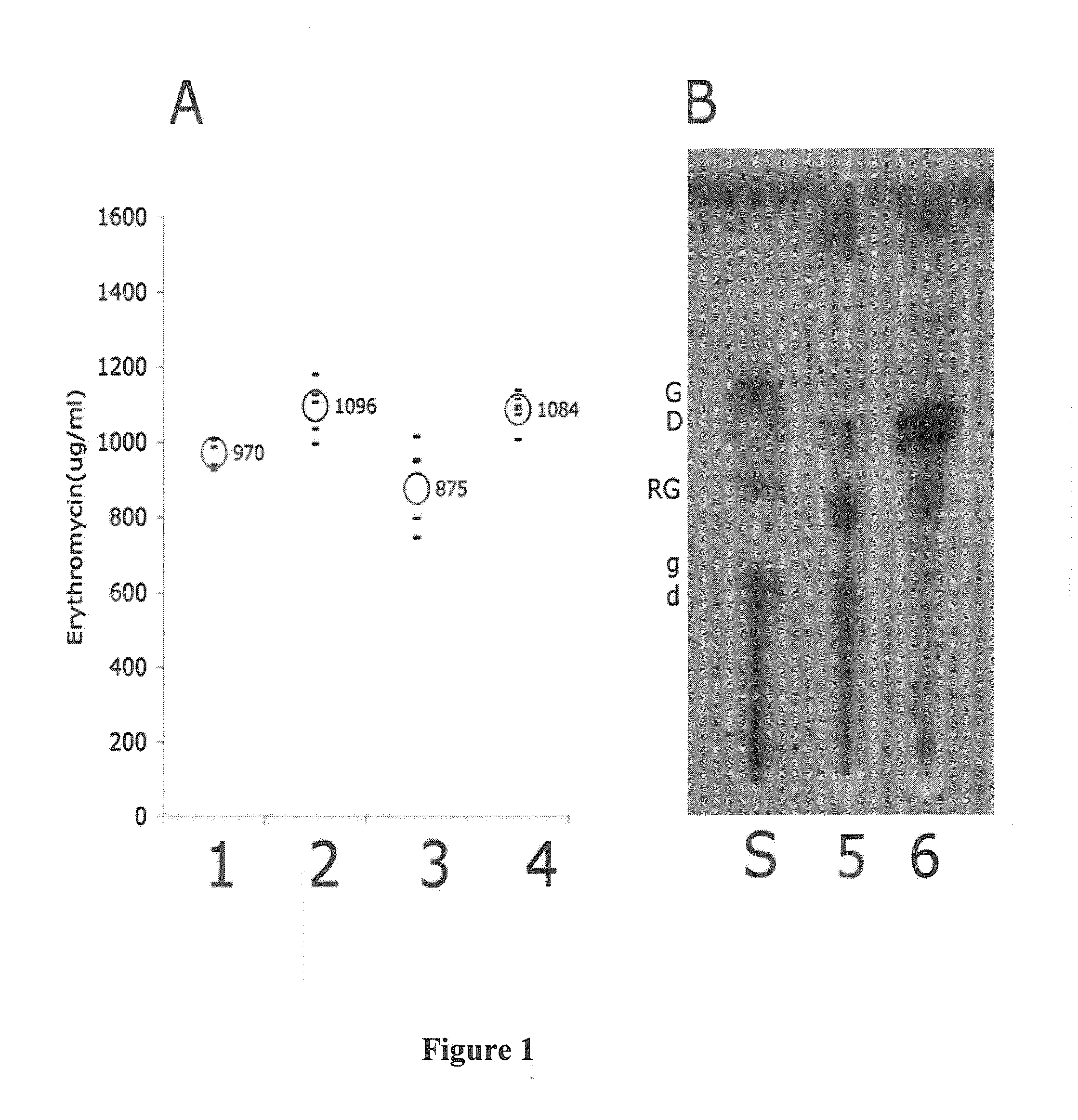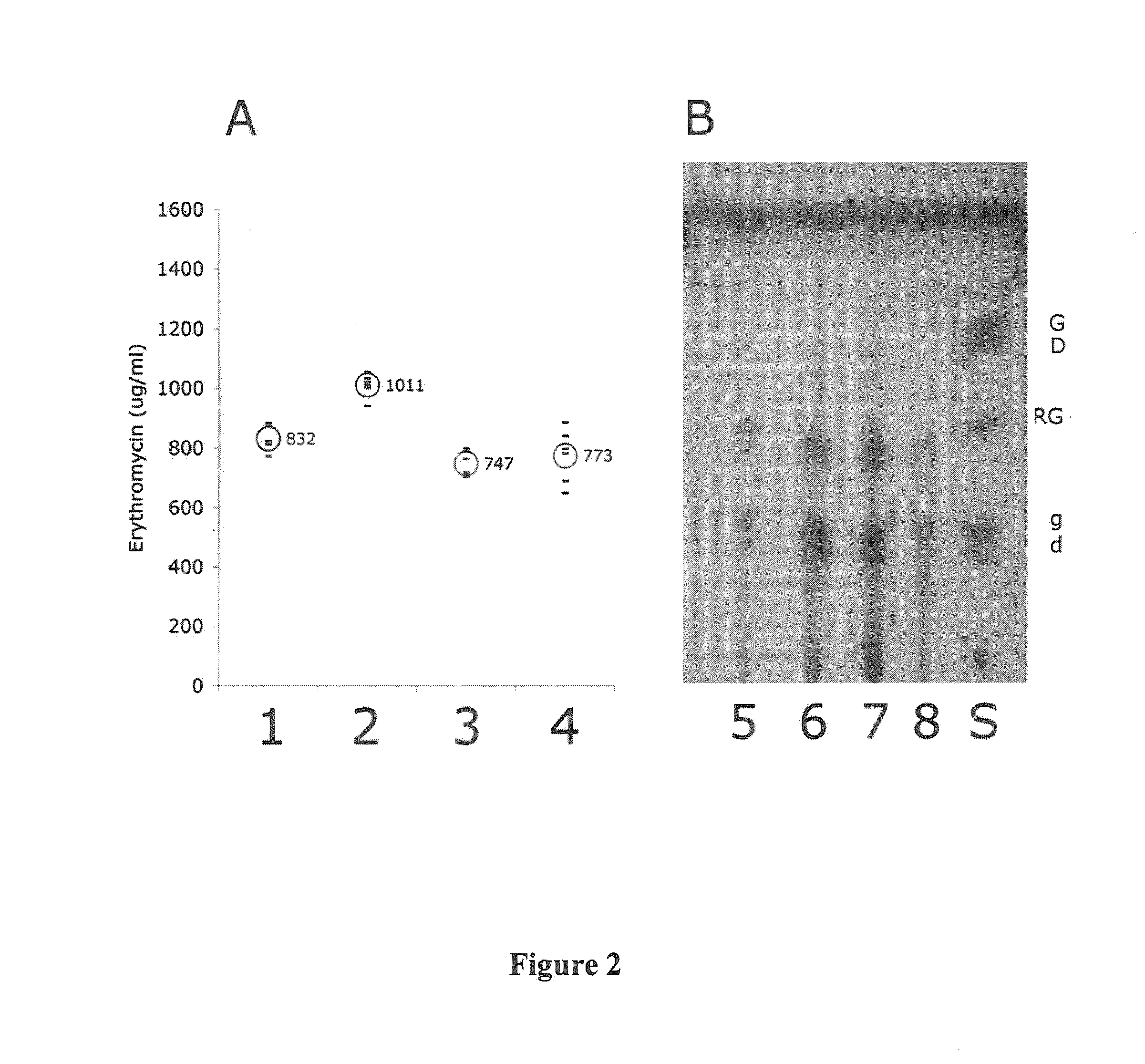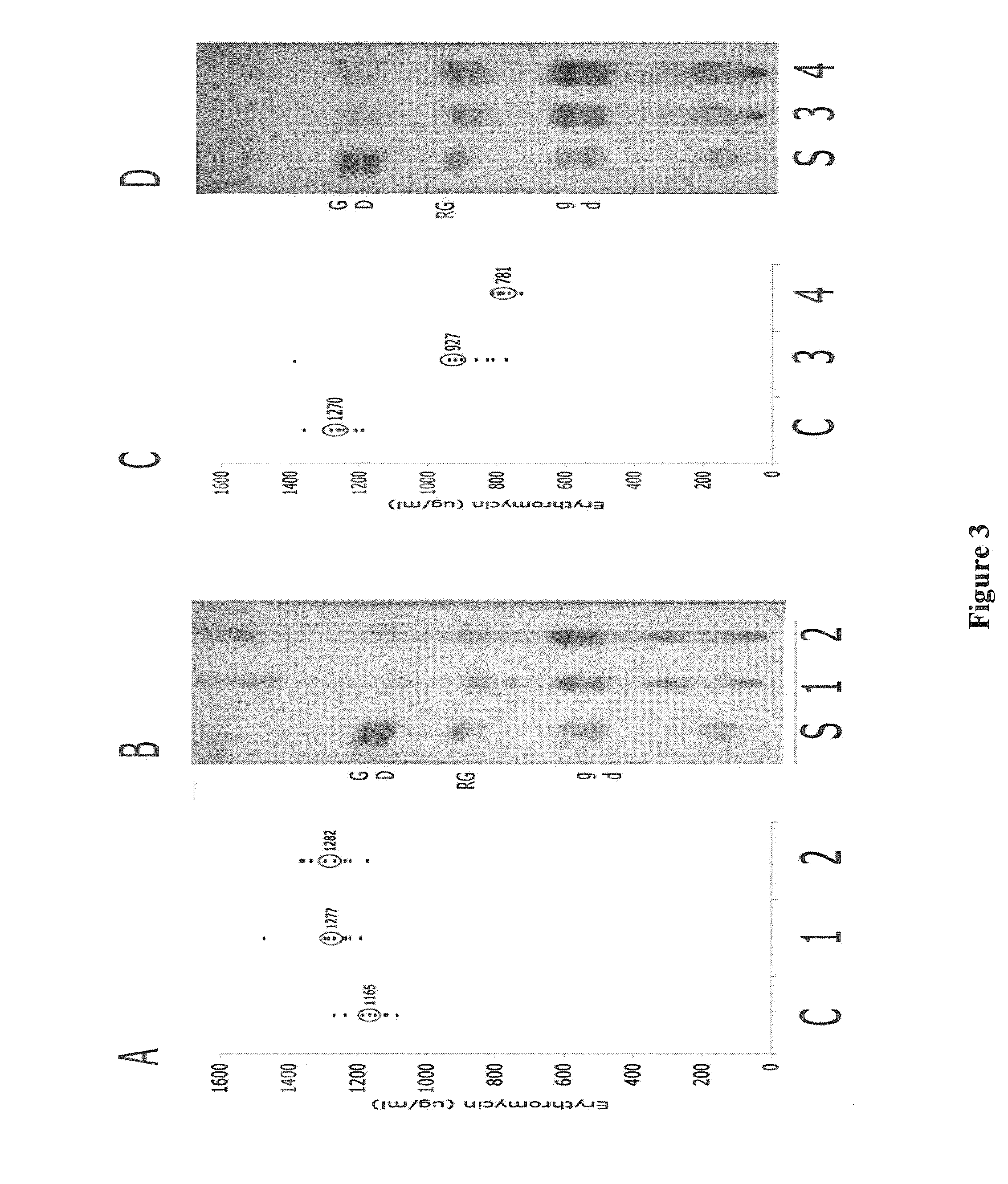Soybean-Based Fermentation Media, Methods of Making And Use
a technology of soybean and fermentation broth, applied in the field of soybean-based fermentation media, making and using, can solve the problems of unsatisfactory isoflavone co-product recovery approach, inability to convert isoflavone biotransformation products back, and likely wide array of contamination of isoflavone extract from treated spent fermentation broth
- Summary
- Abstract
- Description
- Claims
- Application Information
AI Technical Summary
Benefits of technology
Problems solved by technology
Method used
Image
Examples
example 1
Strains and Growth Media
[0058]The erythromycin producing strain used for this study was the wild-type “white”Saccharopolyspora erythraea FL2267 a derivative of ATCC 11635 (American Type Culture Collection, Manassas, Va.). S. erythraea cultures were prepared in CFM1 broth (Carbohydrate-based Fermentation Medium. CFM1 per liter distilled water: Difco™ soluble starch, 60 g; Bcto™-soytone (Difco™), 20 g; CaCl2.2H2O (Sigma), 0.1 g; Bacto™-yeast extract (Difco™), 1.5 g; MOPS, 26.5 g; pH adjusted to 6.8 with 4N NaOH (Sigma). Fermentations were performed in OFM1 broth (Oil-based Fermentation Medium). OFM1 contains insoluble medium components and is meant to closely correlate to an industrial-type fermentation medium. OFM1 per liter: toasted nutrisoy flour (ADM, Decatur, Ill.), 22 g; Difco™ soluble starch, 15 g; CaCO3 powder (JT Baker, Phillipsburg, N.J.), 3 g; MgSO4.7H2O (JT Baker, Phillipsburg, N.J.), 0.5 g; FeSO4.7H2O (JT Baker, Phillipsburg, N.J.), 15 mg; Soy oil, 50 ml (ADM, Decatur, Il...
example 2
Chemicals and Biochemicals
[0059]Genistein, daidzein, genistin, daidzin and robinin were purchased from Inofine Chemicals (Hillsborough, N.J.). The enzyme beta-glucosidase was purified from almonds (Sigma Aldrich Chemical Company, St. Louis, Mo.).
example 3
Thin Layer Chromatographic Analysis
[0060]For analytical thin layer chromatographic (“TLC”) experiments, Silica Gel 60 F254 plates (Macherey-Nagel) with 0.2 mm thickness were used. The presence of a fluorescent indicator with a 254 nm excitation wavelength made possible identification of the isoflavone products that appeared as a dark spots at 306 nm (UVP transilluminator). Three solvent systems were used for identification of the isoflavones. First, chloroform:methanol:acetic acid (10:1:1) was found to be better for the separation of aglycones (genistein, daidzein) and, second, hexane:ethyl acetate:methanol (20:20:8) was used for the resolution of the glycosylated isoflavones (“spots A, B and C”, genistin, daidzin). All reagents were HPLC grade. All samples for the TLC analyses were prepared as ethyl acetate solutions. As a standard 0.3 mg / ml ethyl acetate solutions of the pure isoflavones (Indofine, Hillsborough, N.J.) were used. The third general solvent system used was chloroform...
PUM
| Property | Measurement | Unit |
|---|---|---|
| concentrations | aaaaa | aaaaa |
| concentration | aaaaa | aaaaa |
| concentration | aaaaa | aaaaa |
Abstract
Description
Claims
Application Information
 Login to View More
Login to View More - R&D
- Intellectual Property
- Life Sciences
- Materials
- Tech Scout
- Unparalleled Data Quality
- Higher Quality Content
- 60% Fewer Hallucinations
Browse by: Latest US Patents, China's latest patents, Technical Efficacy Thesaurus, Application Domain, Technology Topic, Popular Technical Reports.
© 2025 PatSnap. All rights reserved.Legal|Privacy policy|Modern Slavery Act Transparency Statement|Sitemap|About US| Contact US: help@patsnap.com



